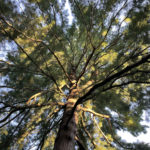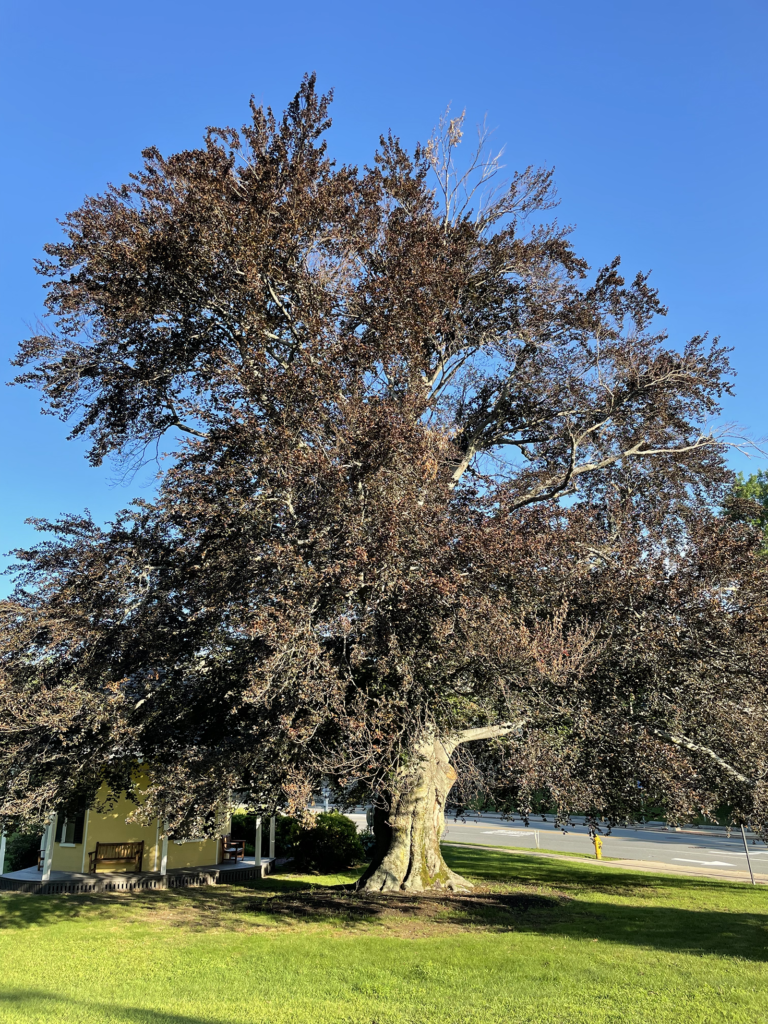
By Jeffrey North
Belmont has about 15,000 trees located in public rights-of-way, parks, schools, and public green spaces throughout town. In any given year, approximately 100 trees need to be removed due to damage or disease. The town has a program to replace them with even more new trees that refresh and assure continuity for our urban forest.
Thirty-three years ago Belmont was named a USA Tree City by the Arbor Day Foundation. Forestry and funding are vital components of this continuing honor. The value of trees on our properties goes beyond aesthetics to vital impacts on health, climate change adaptation, and property values.
The people who care for Belmont’s trees
Tree Warden Tom Walsh has been involved with Belmont trees since his teens. His father owned a tree company, Superior Tree Service, which had a contract to care for Belmont’s trees for several years. Thanks to his mental map of which trees are where and which trees need attention, Walsh knows our urban canopy better than anyone. He has seen many changes from the days when there was a tree nursery at the incinerator site to today, when the town buys 1½ inch diameter bare-rooted saplings wholesale.
Walsh, who has been our tree warden since 1981, is retiring this year. Jay Marcotte, Belmont’s director of public works, was appointed acting tree warden by the Select Board in July with the understanding that Michael Santoro, assistant director of public works, will share the duties. The Select Board determined that Belmont, like all of the towns in the area, needs a full-time tree warden. Lexington has not only a full-time tree warden but another arborist together supervising two tree maintenance crews, with guidance from a seven-member tree committee (and a 48-page Tree Management Manual). Belmont must soon make a larger investment in our tree program, as acknowledged by the Select Board at its July 20 meeting.
Marcotte is enrolled in the Massachusetts Qualified Tree Warden training program offered by the Massachusetts Tree Wardens & Foresters Association. For Marcotte, this is a return to his roots. Along with his MPA, he holds a BS in biology with a focus on dendrology, sylvics, and land management. At one time, Marcotte wanted to work for the US Forestry Service as a forester.
Marcotte stated that even though his role, like Tom Walsh’s before him, is part-time, he and Santoro are full-time town employees who can respond quickly and collaborate effectively with colleagues in the Department of Public Works, with Belmont Light, and Asplundh Tree and other tree contractors. “We are on a lot of committees in town,” said Marcotte, “so we will have a view to most of the activities and decisions that affect trees.” Until a full-time permanent tree warden is hired, Marcotte and Santoro will oversee the care, maintenance, removal, and planting of all public shade trees.
Belmont’s tree planting work
Funding for forestry work has been included in town budgets off and on for more than 40 years. Planting new trees was suspended last year due to pandemic-related labor challenges as well as an interruption in the supply of young trees (typically linden, sycamore, red maple, and London plane trees) from the grower. Years ago Belmont had its own tree farm, but now bare-rooted trees wrapped in burlap are sourced from a vendor in the Midwest. For FY 2022 the budget was restored by $14,000 (after a pandemic-imposed hiatus) to resume the spring planting of 120 to 140 new town trees to replace trees lost every year to disease, age, or storm damage. State funding of $50,000 was awarded to Belmont for the removal of dangerous trees and limbs (but not for planting new trees).
Charitable initiatives and private philanthropy have played an important role in the arboreal history of the town, bridging budget gaps and spaces. As a fitting project for Arbor Day this year, Walsh planted two red oaks on the Orchard Street town property across from the Wellington School. Emily Peterson, a proactive citizen and school abutter, raised generous funds in a GoFundMe campaign to replant eight (maybe nine) trees on town land along Orchard Street near the Wellington School with species selection assistance from the Shade Tree Committee.
The Belmont Garden Club (BGC) has also been an important contributor to our tree canopy. Garden club members have been driving forces behind tree plantings and replenishments with educational signage for more than 30 years. The BGC has planted many trees on the Belmont Library grounds, most recently a new tulip tree. The BGC donated many trees along Concord Avenue about 15 years ago. Last spring, even during the lockdown, the Belmont Garden Club donated $15,000 to upgrade the Ruth Ippen tree walk along the Claypit Pond path. The Ippen family also donated a tree, and Belmont arborist Andrew Airoldi donated another.
In 1983, the Environmental Advisory Committee recommended that the town form a shade tree committee to oversee and support Belmont’s tree inventory. The Shade Tree Committee has been working diligently for 38 years. Of note, the committee has been instrumental in embedding new tree plantings in all Community Preservation Act grants to parks, including Grove Street, Pequossette, and Town Field, and has consulted on the new high school and the community path.
Years ago, the Shade Tree Committee made a list of “Distinguished Trees” and in 2017 this was renamed “Notable Trees.” The list catalogs impressive specimen trees to enjoy on a drive or walk around town. The list is available on the Shade Tree Committee website.
Asplundh Tree Expert LLC, the local branch of a company from Willow Grove, PA, has maintained our street trees by removing and trimming them for almost 25 years. The company also assists Belmont Light with municipal power utility tree concerns. You can imagine how they are needed after a typical nor’easter. And we would be remiss if we failed to recall that both Kelly Brothers and the Hartney Greymont tree company recently donated a full crew for a day to prune all the trees on the library grounds, as did Kelly Brothers.
How to keep Belmont’s trees healthy
Considering the vital role our trees play in making Belmont attractive and enhancing our town of homes, we must do what we can to maintain our arboreal assets.
Here are ways to protect and prolong the lives of your trees.
- Avoid parking on the road verge (hell strip).
- Water the trees on your street regularly in dry spells.
- Avoid paving over tree roots.
- Pick up as many of the chunks of road salt that you can after a winter storm since the salt damages trees as it dissolves.
- Celebrate our trees! We are lucky to have such a beautiful town richly endowed with such a diverse, valuable urban forest.
For more on Belmont tree management, see “Belmont: Town of Homes and Trees,” BCF Newsletter, November 2018, by Shade Tree Committee chair Lucia Gates.
Jeffrey North is the ex officio Belmont Conservation Commission representative on the Land Management Committee for Lone Tree Hill and managing editor of the Belmont Citizens Forum Newsletter.



Sorry, the comment form is closed at this time.